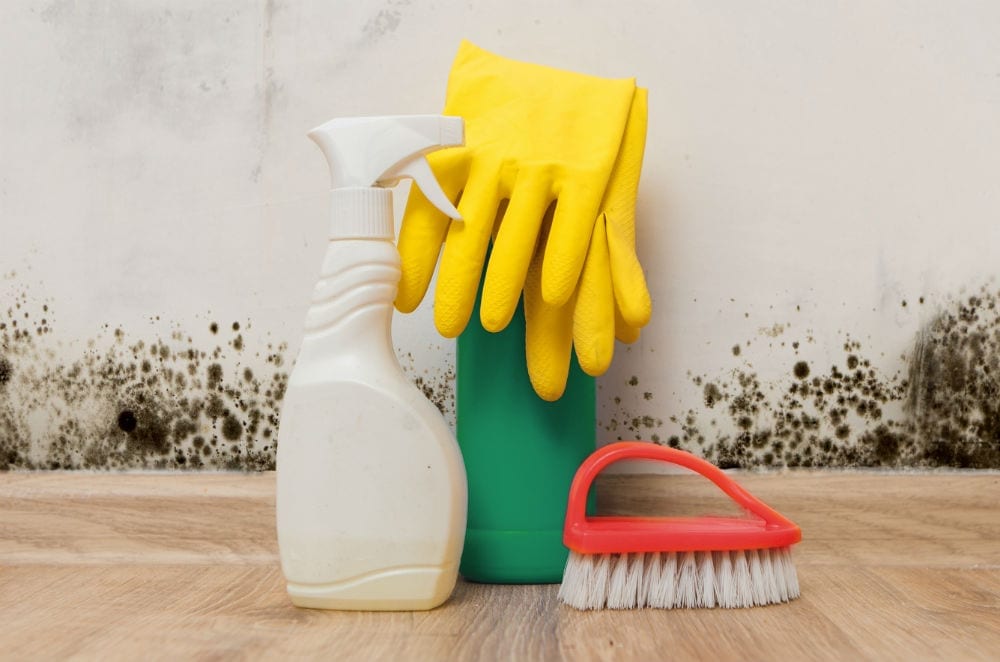Black mold is commonly associated with water damage or flooding, but it is just as likely to grow in areas prone to humidity or condensation and places that are persistently damp. One of the major concerns about it is how dangerous is black mold. Once black mold appears, it may require significant effort to permanently remove.
How Dangerous is Black Mold?
There is a lot of controversy about how dangerous black mold is. As far as scientists can tell, black more is no more dangerous than any other strain.
Black mold was initially linked to two infant deaths in the early 1990s. However, extensive retesting by the Centers for Disease Control and Prevention (CDC) was unable to link the deaths to black mold.
What Is Black Mold?
Unfortunately, there is a lot of misinformation about black mold and mold in general. There are actually thousands of types of mold and many of them are black in color. However, when most people think of black mold, they are actually thinking about a number of species of mold in the genus Stachybotrys. The most infamous of the black mold species are Stachybotrys chartarum and Stachybotrys chlorohalonata.
As the name suggests, black mold is usually is a greenish-black color. However, it may also be a variety of other colors as well. Black mold is one of a variety of airborne fungus that grows in the presence of moisture. Like all molds, black mold in a home or business is a symptom of a water issue. While you can clean up black mold, it will return as long as there is a consistent source of moisture.
What Are the Health Risks of Black Mold?
All molds pose some health risks, however, there is no scientific evidence that so-called toxic black mold is more dangerous than other molds. Common symptoms of mold exposure can be similar to mild allergies. They usually include a stuffy nose or chest congestion, dry or itchy eyes, or mild skin irritation. Mold may cause more severe symptoms in individuals with mold allergies, prone to upper respiratory issues, or who have immune deficiencies.
How Do You Know If You Have Black Mold?
Due to concerns about whether black mold is dangerous, many people want to know if they have black mold. The simple truth is that most varieties of mold appear black, so you won’t be able to tell species of mold apart just by looking at them. Unfortunately, the only way to identify the specific species of mold, fungus, or mildew is with costly scientific analysis. Regardless of the species, you should repair the source of the moisture and remove the mold as soon as possible.
Is There a Difference Between Mold and Black Mold?
The black molds in the Stachybotrys genus are just one of the thousands of types of mold. While each mold is unique, most behave very similarly. In nature, molds aid in the decomposition of organic matter. Within a home or business, all molds will begin to decompose building materials if there is a consistent source of moisture. Like all molds, you should take steps to address black mold issues in your property to prevent structural damage.
How Do You Clean Black Mold?
When it comes to cleaning black mold, it’s important to remember that mold is the symptom of a water issue. If you don’t address the water first, black mold will return even after a thorough cleaning. After making repairs, use fans and dehumidifiers to remove excess moisture and dry affected areas.
For areas of mold less than a few square feet, you can clean up black mold with a disinfectant solution. While a solution of bleach and water will work, a hospital-grade disinfectant is much more effective. Wipe hard surfaces like metal, glass, and plastic down with a rag soaked in the disinfectant. Use a sprayer to mist the disinfectant throughout the area.
Unfortunately, cleaning black mold from porous materials like carpeting and drywall is much more difficult. While the sprayer may work in some cases, you may still need to replace those items. When in doubt, discard items that you aren’t certain you can effectively clean. This includes paper and cardboard items. To prevent the spread of black mold spores, bag items in heavy-duty construction-style garbage bags.
Review our how to clean mold guide for more details on cleaning up black mold Although do-it-yourself cleaning can be effective, you may not be able to permanently remove black mold on your own. For areas larger than a few square feet, the CDC recommends hiring a mold remediation company. They have the training and knowledge to safely remove black mold and prevent it from returning.
Get Black Mold Removal Now
Even after a thorough cleaning, mold can still lurk behind wallpaper, drywall or paneling, underneath flooring or in carpet padding, or in the walls and ceiling. If you are worried about black mold in your home, we can help. Call 1-888-443-3110 now for a free estimate for all black mold removal services.





